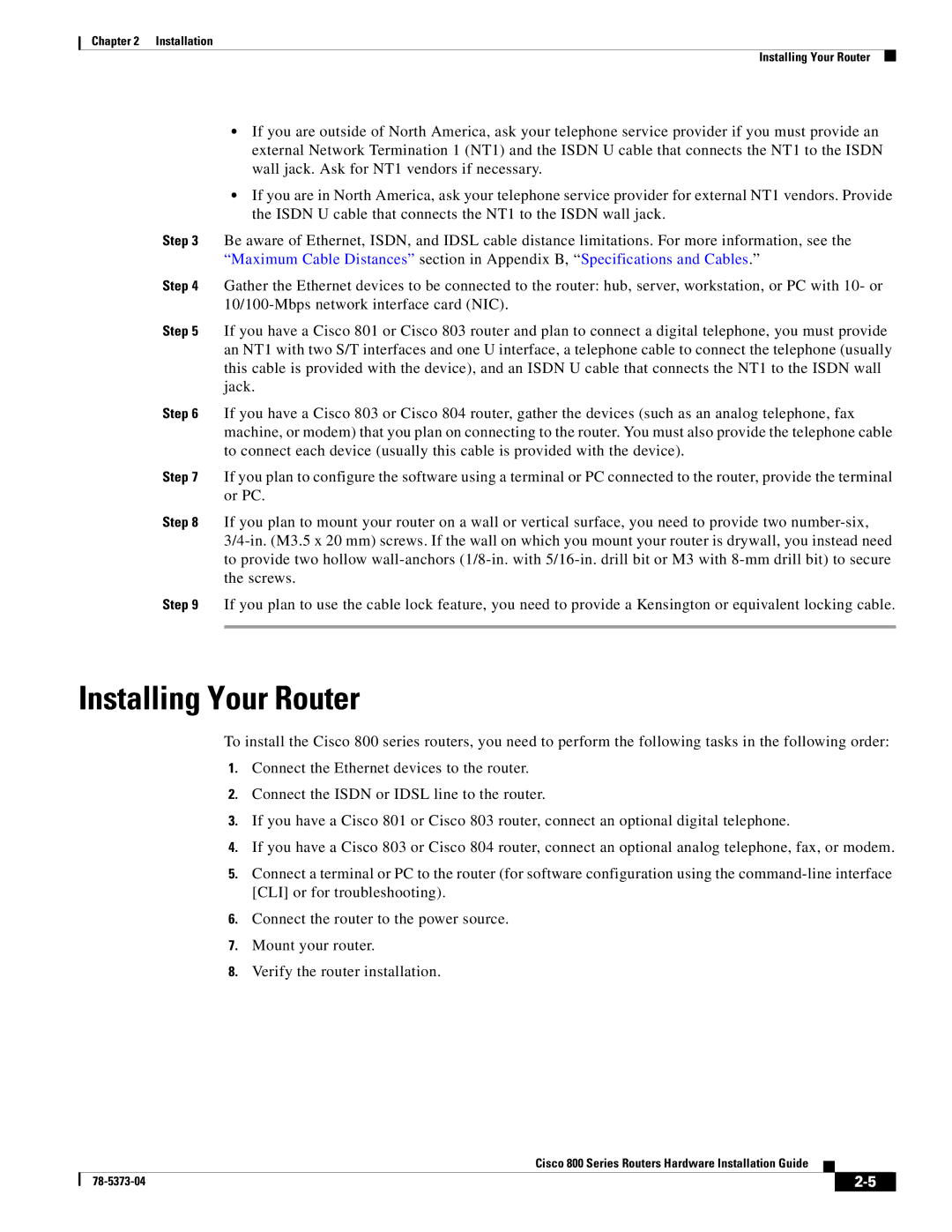
Chapter 2 Installation
Installing Your Router
•If you are outside of North America, ask your telephone service provider if you must provide an external Network Termination 1 (NT1) and the ISDN U cable that connects the NT1 to the ISDN wall jack. Ask for NT1 vendors if necessary.
•If you are in North America, ask your telephone service provider for external NT1 vendors. Provide the ISDN U cable that connects the NT1 to the ISDN wall jack.
Step 3 Be aware of Ethernet, ISDN, and IDSL cable distance limitations. For more information, see the “Maximum Cable Distances” section in Appendix B, “Specifications and Cables.”
Step 4 Gather the Ethernet devices to be connected to the router: hub, server, workstation, or PC with 10- or
Step 5 If you have a Cisco 801 or Cisco 803 router and plan to connect a digital telephone, you must provide an NT1 with two S/T interfaces and one U interface, a telephone cable to connect the telephone (usually this cable is provided with the device), and an ISDN U cable that connects the NT1 to the ISDN wall jack.
Step 6 If you have a Cisco 803 or Cisco 804 router, gather the devices (such as an analog telephone, fax machine, or modem) that you plan on connecting to the router. You must also provide the telephone cable to connect each device (usually this cable is provided with the device).
Step 7 If you plan to configure the software using a terminal or PC connected to the router, provide the terminal or PC.
Step 8 If you plan to mount your router on a wall or vertical surface, you need to provide two
Step 9 If you plan to use the cable lock feature, you need to provide a Kensington or equivalent locking cable.
Installing Your Router
To install the Cisco 800 series routers, you need to perform the following tasks in the following order:
1.Connect the Ethernet devices to the router.
2.Connect the ISDN or IDSL line to the router.
3.If you have a Cisco 801 or Cisco 803 router, connect an optional digital telephone.
4.If you have a Cisco 803 or Cisco 804 router, connect an optional analog telephone, fax, or modem.
5.Connect a terminal or PC to the router (for software configuration using the
6.Connect the router to the power source.
7.Mount your router.
8.Verify the router installation.
Cisco 800 Series Routers Hardware Installation Guide
|
| ||
|
|
